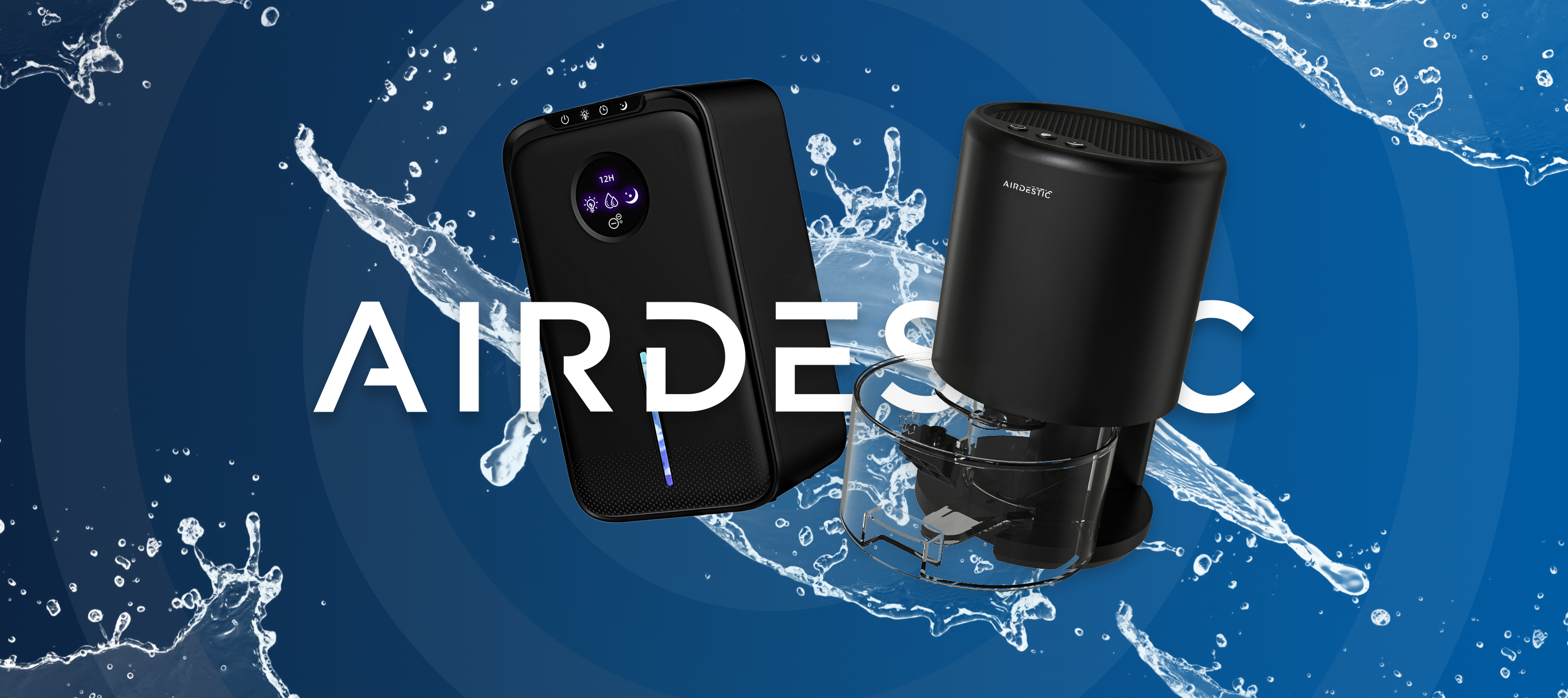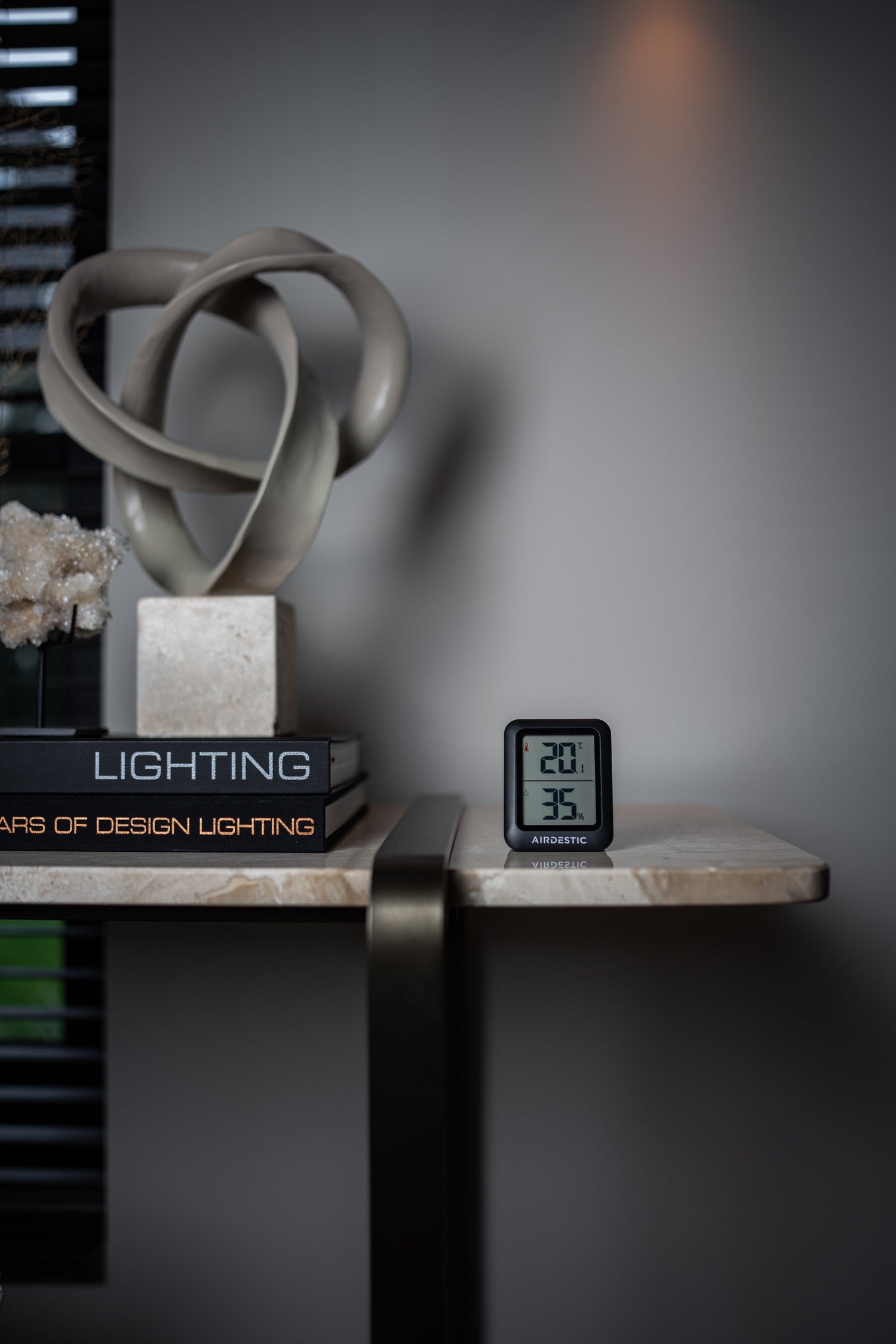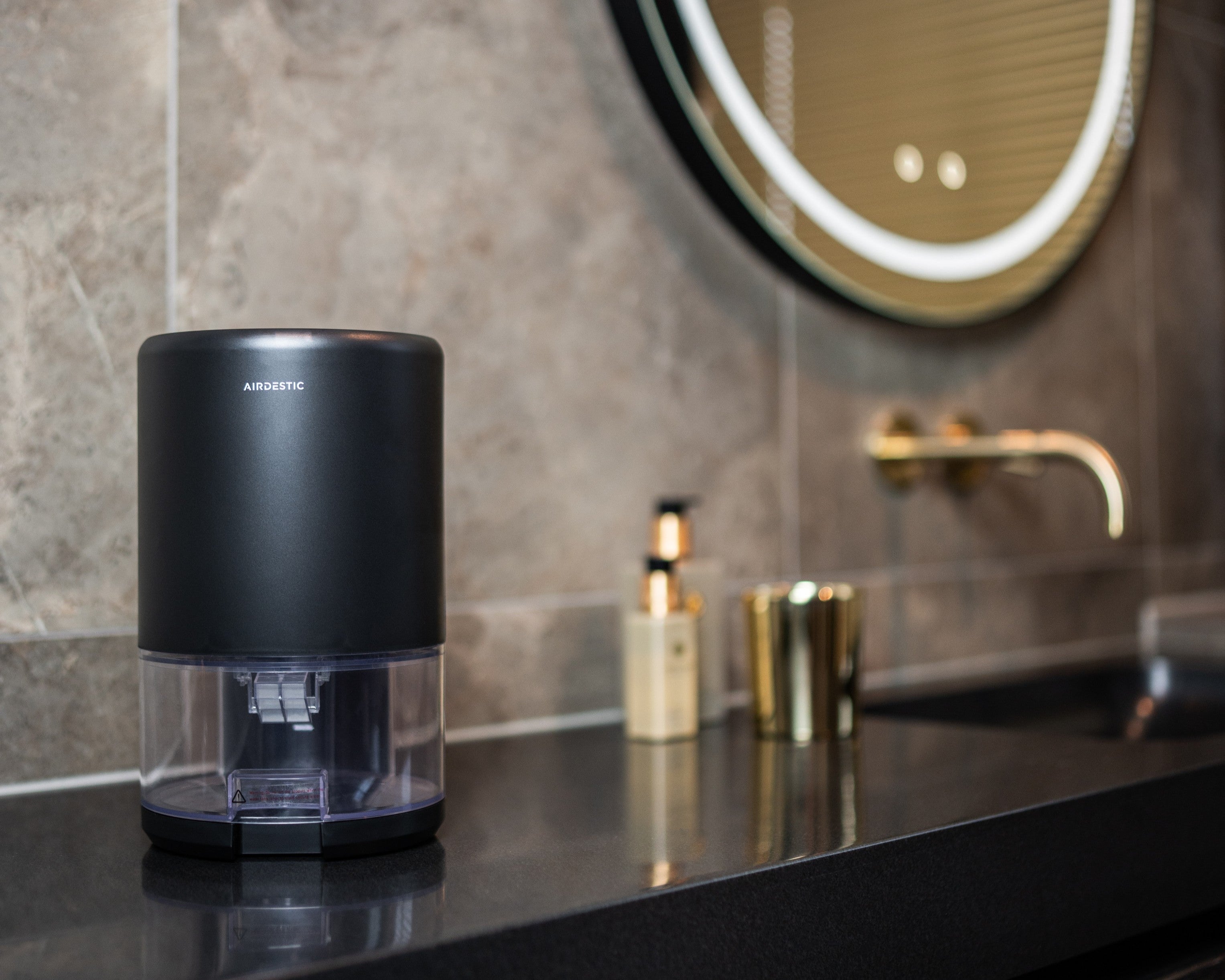A hygrometer is an instrument used to measure humidity, which refers to the amount of moisture or water vapor in the air. It can measure relative humidity, which indicates how much water vapor the air contains compared to the maximum amount the air can hold at a given temperature.
How does a Hygrometer work?
A hygrometer, such as the digital hygrometer or thermo-hygrometer, uses electronic sensors that respond to moisture in the air. These sensors detect changes in electrical resistance, capacitive changes or resonance frequencies. By using a humidifier with a hygrometer, you can accurately measure and manage indoor humidity.
When you place the hygrometer indoors, the sensor records the moisture content in the air and then sends a signal to the hygrometer display. This is essential for maintaining a healthy indoor climate.
Why is it important to measure humidity?
Measuring humidity is of great importance because it has a significant impact on our health, comfort and the quality of our living environment. A good balance in humidity can provide a pleasant and healthy living environment, while extreme levels can cause both physical and material problems.
Health: Ideal humidity promotes good breathing and can help prevent respiratory problems such as asthma, allergies and colds. It can also reduce the symptoms of conditions such as sinusitis and dry cough.
Comfort: Suitable humidity ensures a comfortable indoor climate and prevents discomfort caused by dry skin, irritated eyes and an itchy throat.
Preservation of furniture and interior: Optimal humidity helps preserve wooden furniture, floors and other interior elements.
However, it is also important to understand the disadvantages of incorrect humidity:
Mold growth: Excessive humidity can lead to mold growth in your home, which can cause allergies, asthma and other respiratory problems.
Allergies: A humid environment promotes the growth of allergens such as dust mites and mold spores, which can cause allergic reactions.
Condensation: Excessive humidity can lead to condensation on windows, walls and other surfaces, which can result in moisture problems and mold growth.
By regularly measuring the humidity in your home using a hygrometer, you can maintain the balance between optimal humidity and its benefits in terms of health, comfort and preservation of your interior.
Where do I place a hygrometer?
Hygrometers have various applications in our daily lives. For an overall assessment of the humidity in your home, it is advisable to place the hygrometer in a central living space, such as the living room or kitchen. Since we spend a lot of time in our bedrooms, it is also important to monitor the humidity there.
It is important to place the hygrometer in a representative location and avoid placement near direct heat sources, damp areas, doorways and windows.
How do I use a hygrometer?
Allow the hygrometer to adapt: After placing the hygrometer in the correct location, for example next to your humidifier with hygrometer, it is important to leave the device for a few minutes to adapt to the environment. This gives the hygrometer time to obtain a stable reading and display accurate results.
Read the humidity : Look at the hygrometer display and read the humidity displayed, usually shown as a percentage, such as 45% or 55%. By regularly measuring the humidity in your home using a hygrometer, you gain insight into the amount of water vapor present in the air.
Compare the measurements to the ideal range: Compare the humidity reading to the ideal range of 40% to 60%. If the humidity falls within this range, your home is at an optimal level of humidity.
Take measures based on the measurements: Depending on the humidity reading, you can take appropriate measures to keep the humidity in your home in balance.
With high humidity: If the humidity is higher than 60%, you may consider using a dehumidifier. This device helps remove moisture from the air, thereby lowering the humidity. This can be useful, especially in damp areas where mold growth and other moisture-related problems can occur.
With low humidity: If the humidity is lower than 40%, you may consider using a humidifier. This adds moisture to the air, increasing the humidity. This can help relieve symptoms caused by overly dry air, such as dry skin, cracked lips and irritated airways. In addition, a humidifier can help protect wooden furniture and other interior elements from drying out and cracking.
Using a hygrometer or thermo-hygrometer allows you to accurately measure the humidity in your home and make adjustments as necessary. By proactively responding to the information obtained, you can maintain a healthy humidity balance and enjoy a comfortable living environment. Regularly measuring the humidity in your home using a hygrometer allows you to take the right measures to optimize the humidity and prevent any problems.
In conclusion: A hygrometer is a useful tool to measure and monitor humidity, whether you are at home, at work or in a specific environment. By monitoring humidity, you can prevent problems such as mold growth, allergies and respiratory problems.




Leave a comment
This site is protected by hCaptcha and the hCaptcha Privacy Policy and Terms of Service apply.